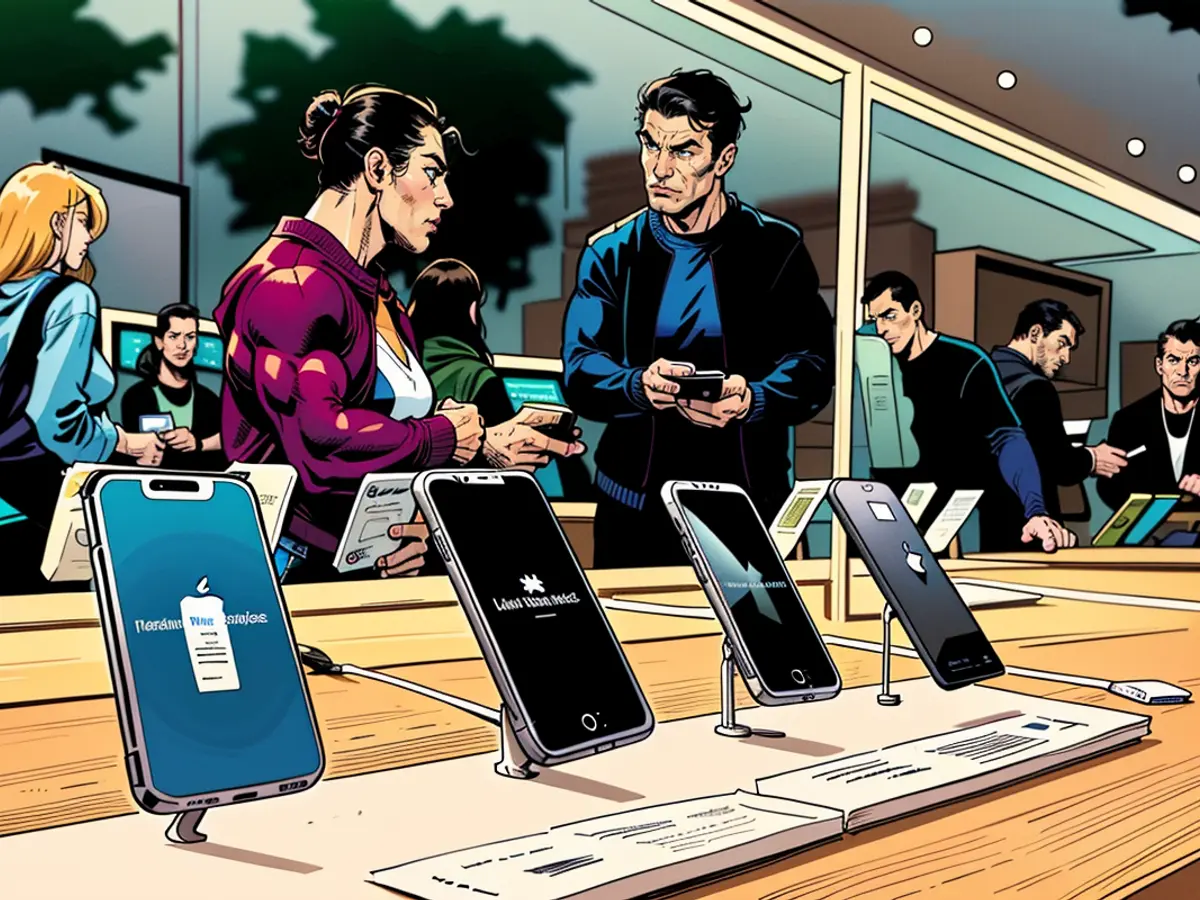The iPhone 16 from Apple is reportedly not off to a strong debut, as per analysts' predictions, yet some remain hopeful for a 'spectacular upsurge'.
Apple required the iPhone 16 to be a significant success following years of less-than-stellar iPhone sales. The times when faithful Apple customers would line up to exchange their devices almost yearly have passed, and the company hasn't given consumers a substantial reason to upgrade since introducing 5G connectivity with the iPhone 12. They had hoped that a collection of new software features integrating AI would be popular.
However, after numerous high-profile launch events, it's unclear if Apple has effectively conveyed its persuasive arguments to customers yet.
Apple reportedly sold only an estimated 37 million iPhone 16 units during the initial pre-sale period, a decrease of over 12% compared to the same period the previous year, based on a blog post from analyst Ming-Chi Kuo of TF International Securities. Particularly, demand for the more expensive iPhone 16 Pro models plummeted compared to the iPhone 15 launch.
In the first week following pre-sales, analyst Dan Ives estimated slightly higher pre-sale figures at around 40 million units. CFRA Research technology analyst Angelo Zino also reported a decline in year-over-year preorder sales.
Rather than the quantity of devices sold during the presale period, Apple may need to focus on the iPhone 16 models consumers are preferring, as the enhancements to the standard devices make them rather similar to the Pro models, according to analysts. There seems to be greater interest in the lower-priced iPhone 16 and iPhone 16 Plus devices than the Pro and Pro Max, which could impact the average selling price and overall iPhone sales revenue.
During the first weekend of pre-sales, Apple reportedly sold 9.8 million iPhone 16 Pro units and 17.1 million iPhone 16 Pro Max units, decreases of 27% and 16% respectively, compared to the previous year, according to Kuo. On the other hand, sales of the standard iPhone 16 and the Plus saw a slight increase.
The issue, as Zino pointed out, is that the base iPhone models may be too good.
“Given that this is primarily a software upgrade cycle, my concern is that there were more sales of the lower-priced iPhone 16 than the higher-priced devices,” Zino said. “When you examine the standard devices, they received significant upgrades in terms of their cameras and internal processors.”
Kuo also highlighted shorter delivery lead times for the iPhone 16 Pro models during the first weekend of pre-sales compared to the iPhone 15, a period in which customers had to wait up to a month for their devices. He attributed this to the fact that the iPhone maker's AI capabilities, such as "Apple Intelligence," are yet to be available on these devices (scheduled for release in beta later this month along with iOS 18.1), and the company's ongoing battle with increased competition in China.
“You need to wait for word of mouth to spread through the consumer base over the next couple of quarters,” before consumers appreciate the value of the new technology, Zino said.
The initial pre-sale response suggests that the promise of integrated AI features alone may not be sufficient to rescue Apple from its iPhone slump. There is only so much the company can do to enhance the iPhone's camera or modify its screen size, and software updates that many consumers view with skepticism may be a harder sell. And for all but the most devoted Apple fans, analysts believe that most customers probably do not yet fully comprehend why the AI features would warrant an upgrade.
It is still early days for the iPhone 16, and the device saw more sales following its in-store availability on September 20.
Analysts use pre-sale figures to estimate demand but not necessarily for a complete picture. Many consider lead time, the time between when consumers order devices and when they are delivered, to be a valuable indicator of demand. The longer the wait, the more devices are sold.
Lead times for the iPhone 16 are shorter than they were last year, which could suggest that Apple has improved its supply chain, allowing it to manufacture more phones more quickly, according to Canalys Analyst Le Xuan Chiew. Meanwhile, CFRA's Zino proposed that Apple may have increased supply ahead of the launch to generate a significant iPhone upgrade cycle for the iPhone 16.
Another favorable sign is that T-Mobile CEO Mike Sievert stated after the first week of pre-sales that T-Mobile had sold more iPhone 16s this year than it did with the iPhone 15 last year.
Apple won't release any iPhone sales data until it reports earnings next month, but analysts still believe that the iPhone 16 is likely to be successful in the coming months despite a possible slow start, especially heading into the crucial final three months of the year.
As Ives said to CNN, "It's all about a fantastic holiday quarter, and the iPhone 16 supercycle starts in our opinion."
Despite Apple's hopes, the introduction of AI features in the iPhone 16 hasn't seemed to encourage significant upgrades, as indicated by the decreased sales of higher-priced Pro models. Instead, there's a growing interest in the lower-priced iPhone 16 and iPhone 16 Plus devices. (business, tech)
The tech industry analyst Ming-Chi Kuo of TF International Securities reported a 12% decrease in iPhone 16 pre-sales compared to the previous year, highlighting the challenge Apple faces in effectively showcasing its new tech features to customers. (business, tech)








